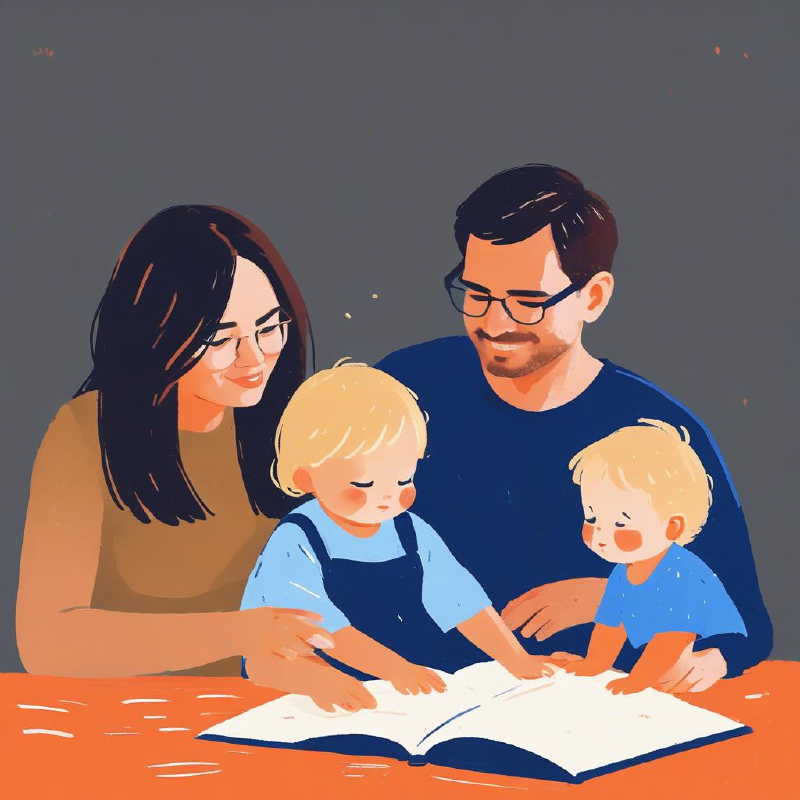Transforming Ideas into Books: Your Ultimate Storybook Checklist
“Reading should not be presented to children as a chore, a duty. It should be offered as a gift.”
– Kate DiCamillo
Books play a crucial role in a child’s early cognitive development. They also help to boost creativity, provide the power of imagination, learn new languages, and develop emotional intelligence. Whether it is to expand knowledge, spark curiosity, or provide entertainment, books are always the answer.
Storybooks, in particular, are very entertaining for toddlers, and kids. They consist of stories in easy child-understandable language, with moral plotlines, and diverse characters, set in colorful backdrops of an environment that resonates with their understanding. Being very modest, and not involving a lot of logical thinking, storybooks are a medium of relaxation in children.
How to go about writing your first storybook? What are the things that you need?
Well, here’s a short roadmap that you can follow to transform your idea into a full-fledged book.
1. Understanding Your Audience
When it comes to writing, you (the writer) must be aware of your audience. Narrow down to a specific age group or other traits for your ideal reader. This helps you (the writer) to know about the jargon you need to include, the theme that your audience would be happy to read about, and the complexity of the sentences in the story.
Example - My customer is a mother, who wants their child (the audience) to learn English. The typical age group of the audience would be about 5. They are likely to enjoy hide-and-seek and reading about animals.
2. Choosing the Theme
The central idea of the story must be clear to you (the writer). It is the essence around which the entire story revolves around. The theme must be properly understood and maintained while writing the story.
Example - Since Stella likes animals, I could write a story about Stella and her animal friends helping with a task. The theme could be learning compassion for nature, helping one another, knowing what teamwork is, etc.
3. Creating the Characters
A story involves different characters that have specific roles and personalities throughout. When crafting a story for children, a story that involves characters from their daily life, is suggested.
Example - In our backyard, there is a squirrel that Stella had befriended. We call him by the name ‘Peaches’. We also have a dog, who we call ‘Leo’. I’ll make sure to put these characters in my story.
4. Developing the Plot
Plot is the most important part of writing a story. It is through plot that we deliver the central idea of our story. For writing a personalized book for your child, it is recommended that the plot involves the child in most parts.
Example - One could write - Once upon a time, there was a girl named Stella. She loved animals a lot. Peaches, the squirrel, and Leo, the dog, were her best >friends. One day they were playing hide-and-seek when they noticed a wilted tulip flower. Stella, Peaches, and Leo were worried about the tulips.
Peaches said, “Stella, we must save the tulips.”
Leo agreed.
Stella suggested everyone to help.
Peaches asked, “But how do we rescue the tulips?”
Leo pointed towards the water pot.
…..
Tip: Add Interactive Elements** when writing for kids, such as, in the story given above, we can add questions like - ‘Should Stella save the tulip, or continue to play?’ - This helps in building decision-making capabilities in children.
5. Illustrate the Story
Adding graphics to stories makes them more interesting and engaging to read. Inserting illustrations according to the storyline not only looks visually appealing but also helps in making children learn about identifying objects, colors, etc. StoryGenius excels here by creating illustrations for your story using AI, significantly reducing your budget.
Example - I would insert the picture of a girl, a squirrel, and a dog looking at a wilted tulip, to accompany my story.
6. Review and Revise (Proofreading)
After drafting your book, it gets time to review the story, to check for any errors or inconsistencies. Make sure your story is clear, consistent, and coherent. Check for flow, the clarity, and the length of the story. Check for any grammar, punctuation, or spelling errors. Moreover, make sure that if you’re using a cultural reference, then it should have been portrayed respectfully. Lastly, consider getting feedback from friends, family, or trusted individuals, to ensure the readiness of your story.
Try StoryGenius - A One-Stop Solution to Craft Personalized Storybooks for Children
Designed specifically for children’s storybooks, StoryGenius is a platform that helps in creating and illustrating storybooks with the help of AI. Along with simple stories, and high-quality illustrations, StoryGenius can generate an entire storybook in under 5 minutes. If you’re not sure about the idea, we have got you covered with some suggestions to choose from. Otherwise, you can simply type in your own story and let the magic unfold. The platform generates illustrations similar to your child by taking in an image of your child. Use the books generated for personal use or publishing.
Start your personalized storybook journey on StoryGenius today!
Conclusion
Crafting a storybook is not an easy task, but not impossible. With proper steps and understanding, you can write a storybook flawlessly. When writing for children, the author must maintain a child-friendly language. Another point to make sure is that the story resonates with the interest of the child. A proper review of the illustration is also needed. In the end, drafting, reviewing, and making changes, are a part of writing. By following these checkpoints and using the examples as a guide, you can craft your personalized storybook efficiently.
